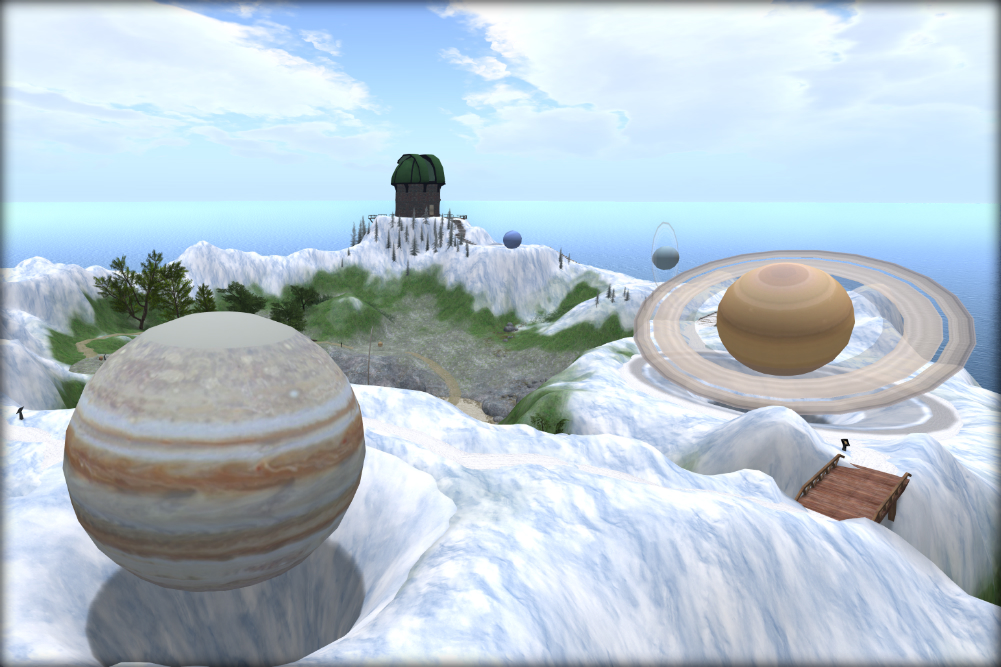I just absolutely love astronomy. As a kid I was sure I wanted to be an astronomer, at least until I realized that it required rather a lot of math. You know what they say about the best laid plans and all… Oh well. Even though I reluctantly abandoned the idea of a science career I never lost my love of reading about the planets and stars and I still find it fascinating. When I saw pics from the Oceania Planetary Park I was excited to visit and wander around.
The park was created by Kimika Ying as a part of the Linden Endowment for the Arts program. You’ll arrive at the center of the island at the sun, then follow a path that meanders around the sim, with a model of each planet. At each stop there is an information board with a notecard that will provide a brief introduction to the planet, as well as links to discover more information.
Each planet is shown in rotation at a rate of 1 minute = 24 hours, and the moons that are represented are actively orbiting their planet. They are also to scale relative to the planet and their orbit times, which can make finding some of them a bit tricky as they zoom around. If you’re having trouble locating them you can click the black button to display a line to point you in the right direction. The additional lines around Mars show the spacecraft currently in orbit as well.
The path winds up at an observatory with doorways leading you to three additional exhibits. The Gravity Well demonstration gives you an example of how the gravity well surrounding a planet behaves, and allows you to shoot a cannon ball from various positions to see how it reacts to the gravity well.
The Planetary Walk is a representation of relative distance in our solar system. The white vertical lines represent the speed of light as it moves away from the sun. As you leave the inner planets and pass Mars towards the outer planets you really begin to appreciate just how vast the distances are.
A third door leads to a simulator that displays a variety of galaxies and stars.
The observatory also includes art and maps, and a telescope on the upper level. I loved wandering through the solar system and ended up with a lot of open browser tabs so I could keep exploring. The Oceania Planetary Park Blog follows along with the development of the sim and includes some videos, as well as additional links for those who want to learn more about the planets and astronomy.
Visit the Oceania Planetary Park








 RSS - Posts
RSS - Posts
0 Comments
Trackbacks/Pingbacks